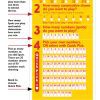Hey there, curious minds! Ever wondered if you can plaster over blackjack? Well, let’s dive into this captivating topic and explore the possibilities together!
Now, I bet you’re wondering, “Can you really plaster over blackjack?” It’s an intriguing question that deserves some exploration. Today, we’re going to dig deep into the world of blackjack and plastering to see if they can coexist.
So, buckle up and get ready to uncover the truth behind this enigmatic duo. Can you plaster over blackjack? Let’s find out together!

Can You Plaster Over Blackjack?
Plastering is a common technique used to achieve smooth and even surfaces on walls and ceilings. However, when it comes to certain materials like Blackjack, questions may arise about whether plastering can be done over them. In this article, we will delve into the topic of plastering over Blackjack, discussing its feasibility, potential challenges, and benefits. Uncover the secrets of achieving a flawless finish on your walls while maintaining the integrity of your Blackjack surface.
Understanding Blackjack and Its Properties
Blackjack, also known as bitumen paint or asphalt primer, is a versatile material commonly used in the construction industry. It is primarily used as a waterproofing agent and protective coating for various surfaces, including metal, concrete, and masonry. Blackjack offers excellent durability, heat resistance, and adhesion properties.
When considering plastering over Blackjack, it is crucial to understand the material’s characteristics. Blackjack has a smooth and glossy surface, which can pose challenges when trying to achieve optimal adhesion with plaster. Additionally, the waterproofing properties of Blackjack may restrict the plaster’s ability to properly bond with the surface.
Can You Plaster Over Blackjack?
Plastering over Blackjack is technically possible but requires careful preparation and consideration. Here are the key steps to follow to increase the chances of a successful plastering project:
1. Surface Cleaning: Thoroughly clean the Blackjack surface to remove any dirt, dust, or debris. Use a suitable cleaner that does not leave any residue and rinse it off properly.
2. Surface Priming: Apply a specialized primer compatible with both Blackjack and plaster. This will improve the adhesion between the two materials and increase the chances of a successful plastering job.
3. Creating a Bonding Layer: Use a bonding agent or adhesive, specifically designed for use with Blackjack and plaster, to create a solid bond between the two materials. This layer will ensure the plaster adheres properly to the surface and minimizes the risk of delamination.
4. Applying the Plaster: After the preparation steps, proceed with applying the plaster onto the primed and bonded Blackjack surface. Follow standard plastering techniques, ensuring smooth and even coverage. It is essential to work meticulously to achieve a flawless finish.
Potential Challenges and Considerations
Although plastering over Blackjack is possible, there are several challenges and considerations to keep in mind:
1. Adhesion Issues: The glossy surface of Blackjack can present adhesion challenges. Proper cleaning, priming, and the use of bonding agents are necessary to enhance the plaster’s adhesion to the surface.
2. Moisture and Waterproofing: Blackjack is known for its waterproofing properties. Plastering over it may compromise the waterproofing capabilities. Consider whether the surfaces requiring plastering are in areas where moisture sensitivity is a concern.
3. Compatibility: Ensure the products used for priming, bonding, and plastering are specifically designed to be compatible with both Blackjack and plaster. This will help prevent any compatibility issues that may compromise the end result.
Benefits of Plastering Over Blackjack
Plastering over Blackjack, despite its challenges, can offer several benefits:
1. Aesthetic Appeal: Plastering provides a smooth and visually pleasing surface, enhancing the overall look of the walls and ceilings.
2. Protection: Adding an additional layer of plaster over the Blackjack surface can provide an extra level of protection against external factors such as impact, wear and tear, and moisture.
3. Improved Surface Functionality: Plastering can help improve the surface’s functionality, making it easier to repaint, decorate, or apply other finishes in the future.
Tips for Successful Plastering Over Blackjack
To ensure a successful plastering project over Blackjack, consider the following tips:
1. Seek Professional Advice: If you are unsure about the feasibility of plastering over Blackjack or need guidance on specific products and techniques, consult with a professional plasterer or contractor.
2. Proper Surface Preparation: Thoroughly clean the surface, prime it with a suitable product, and use bonding agents to enhance the adhesion between Blackjack and plaster.
3. Choose Experienced Contractors: When undertaking a complex task like plastering over Blackjack, it is crucial to hire experienced contractors who have previous experience with similar projects.
In summary, plastering over Blackjack is technically possible but requires careful preparation and consideration. By understanding the properties of Blackjack and following the necessary steps, it is possible to achieve a successful plastering project. Always ensure proper surface cleaning, priming, and the use of compatible products to enhance adhesion and create a flawless finish. Consulting with professionals and experienced contractors can further increase the chances of a successful outcome.
Key Takeaways: Can You Plaster Over Blackjack?
- Plastering over blackjack is not recommended as it can lead to further damage.
- Blackjack is a type of roofing material made from bitumen and felt.
- It is important to properly assess the condition of the blackjack before deciding to plaster over it.
- If the blackjack is in poor condition, it is best to remove it and replace it with a new roofing material.
- Hiring a professional roofer is advisable to ensure the job is done correctly and to avoid any potential issues.
Frequently Asked Questions
Here are some common questions related to plastering over blackjack, along with detailed answers. If you’re considering this process, read on to get all the information you need.
1. Can you apply plaster directly over blackjack?
No, it is not recommended to apply plaster directly over blackjack. Blackjack is a type of bitumen-based substance commonly used as a roofing sealant. Plaster is typically used as a finishing material for walls, ceilings, and other surfaces. These two materials are not designed to work together, and attempting to apply plaster directly over blackjack can result in bonding issues.
Before applying plaster, it is important to prepare the surface properly. If you want to plaster over blackjack, consider removing the blackjack first or applying a suitable primer to ensure proper adhesion. Consulting with a professional plasterer or roofing specialist is advisable to ensure the best outcome.
2. What are the risks of plastering over blackjack?
Plastering directly over blackjack comes with certain risks. One of the main concerns is the adhesion between the plaster and the blackjack surface. Plaster is not designed to bond directly to bitumen-based substances like blackjack, which can result in the plaster cracking or detaching over time.
Additionally, blackjack is commonly used on roofs and other exterior surfaces, meaning it is exposed to various weather conditions. Plaster is not typically designed to withstand these conditions and may deteriorate more quickly if applied over blackjack. It is important to consider these risks and consult with a professional before deciding to plaster over blackjack.
3. Can I use a primer to plaster over blackjack?
Using a primer can help improve the adhesion between blackjack and plaster, but it is important to choose the right type of primer. Look for a primer that is specifically designed to bond to bitumen-based surfaces, such as a bitumen primer.
Before applying the primer, ensure that the blackjack surface is clean and free of any loose debris. Follow the manufacturer’s instructions for applying the primer, including drying times and any recommended preparation steps. By using a suitable primer, you can enhance the chances of successful adhesion and a longer-lasting plaster finish over blackjack.
4. What alternatives are there to plastering over blackjack?
If you want to create a smooth or finished surface over blackjack, there are alternative materials and methods to consider. One option is to use a bitumen-based paint or coating specifically designed for use on blackjack. These products are formulated to bond well with blackjack and provide a protective and visually pleasing finish.
Alternatively, you could explore other finishing options such as cladding or siding materials that are suitable for use over blackjack. These alternatives can offer both aesthetic appeal and durability, often providing a longer-lasting solution compared to plastering over blackjack.
5. When should I consult a professional for plastering over blackjack?
If you’re unsure about plastering over blackjack or want to ensure a successful outcome, it is advisable to consult a professional plasterer or roofing specialist. They will have the necessary expertise to assess the condition of the blackjack surface, recommend the best course of action, and handle the plastering process effectively.
A professional will also be able to provide guidance on any necessary surface preparation, priming, and materials selection. By seeking professional advice, you can save time, reduce the risk of costly mistakes, and achieve a higher-quality result when plastering over blackjack.
No Boards…No Problem. Old School Plastering Explained | #construction #diy #plastering #shorts
Summary
Plastering over blackjack can be challenging and may not provide a long-lasting solution. Blackjack can cause problems with the plaster, such as cracking and discolouration. It’s important to properly treat and remove blackjack before applying plaster for better results.
Removing blackjack involves using specialized chemicals and tools, which should be done carefully to avoid damaging the underlying surface. If you’re unsure or inexperienced, it’s best to seek professional help to ensure the job is done correctly. Taking the time and effort to properly deal with blackjack will lead to a more effective and durable plaster finish for your walls or ceilings.









